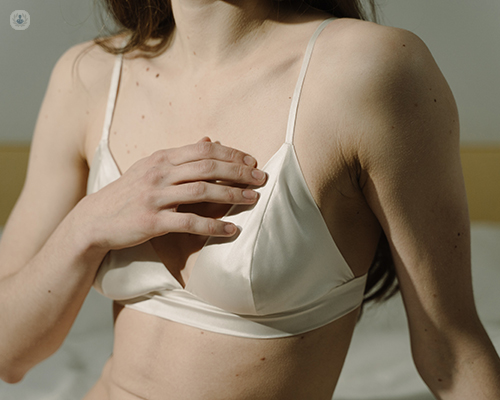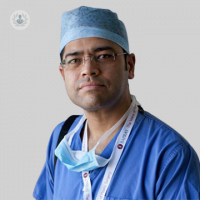Mastopexy / breast uplift: everything you need to know
Written by:What is mastopexy/breast uplift?
Mastopexy/breast uplift is a surgical breast procedure performed to lift the breasts and to raise their positioning on the chest.
The procedure raises women’s confidence, improving the apperance of breasts which are sagging or deflated. The breasts may have become this way due to pregnancy, ageing or perhaps volume loss, causing women to feel self conscious.

Many patients opt to undergo implants or fat transfer, alongside mastopexy because the breasts can appear smaller if a breast lift is performed alone.
In some cases, it is better to perform a ‘reduction-augmentation’, such as in cases where a large amount of heavy breast tissue has sagged down. A reduction-augmentation’ is when a breast reduction is performed in order to remove the sagging tissue and implants are inserted to give fullness higher up on the chest.
What happens on the day of the surgery?
Mastopexy usually involves removing excess skin on the breasts. The surgeon will make incisions according to how much skin needs to be removed. These incisions may be placed around the areola or around the areola and then vertically towards the breast crease.
This technique permits the surgeon to lift the breast to a more natural looking position without the need to change breast size. For some women, breasts may be reshaped or the nipple may be repositioned, according to their circumstances and preferences.
Smaller breasted women tend to have more effective, long-lasting results than bigger breasted women because bigger, heavier breasts may continue to pull downwards after surgery.
If the patient is concerned about the size and shape of their breasts, they have the option to undergo other types of breast procedures. Bigger breasted women may opt to have a breast reduction to aid their overall weight and to prevent future sagging, while smaller breasted women may choose to have a breast augumentation for a fuller appearance.
Are there any side effects?
Immediately after the surgery, the breasts will be swollen and bruised. The swelling and bruising may last 1 to weeks and you may need to take this period of time off week.
You can take some pain relief to aid the post- operative pain.
Will there be any scarring?
Some scarring will occur where incisions have been made, However, surgeons try subtly place the incisions, in order to reduce the visibility of scarring.
The scars will fade over and in some cases, will barely be noticeable after a few months.
When can I expect to see results?
After the surgery, the breasts will be instantly lifted but due to the healing time of swelling and bruising. Additionally, the breasts will need time to settle into place therefore some patients may have to wait around 3 months to notice full results.
How long do the results last?
In the majority of cases, a patient only requires one procedure to achieve long term results. However, a review may be required if the skin continues to stretch as a result of natural ageing.
How long is the treatment time?
Mastopexy usually takes around 1-3 hours. It is performed general anaesthetic and it is common for patients to be able to go home on the same day.
Follow up and aftercare
Due to the incisions made during surgery, some dressing will be applied. The breasts and dressings must be kept dry to protect the healing breasts. Doctors recommend waiting for a week after the procedure to use a power shower. A bath may be a better option during this period.
After the procedure, you will attend follow up appointments so that both patient and surgeon can check that everything is running smoothly. These appointments will take place 1 week, 6 weeks and months after the procedure.
At the first appointment, the wounds will be assessed and if they have healed well, the dressings will be removed.
It is sometimes recommended that the patient wears a sports bra for up to 3 months in order to support the breasts during the healing period.
It is important to practise self care after undergoing the procedure. You will need take approximately 2 weeks off work and avoid sports and exercise for around 6-8 weeks.


